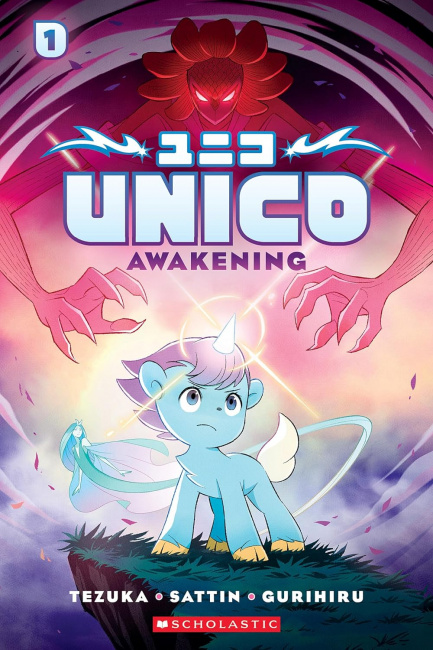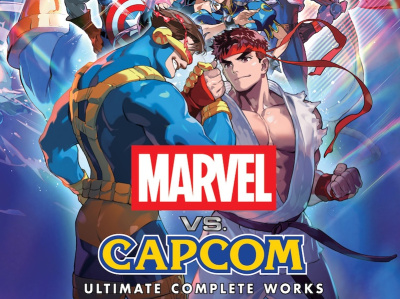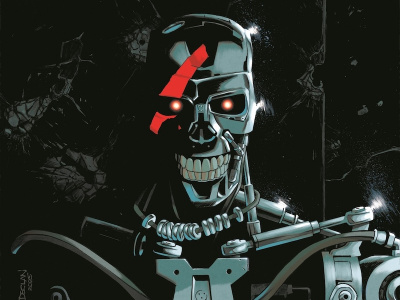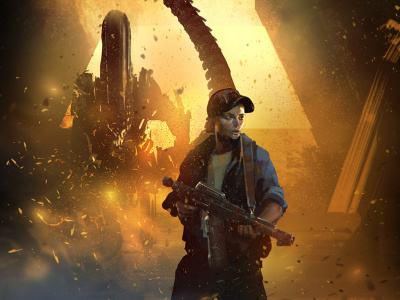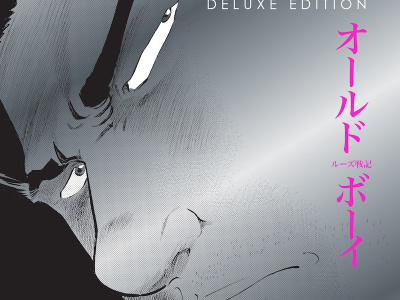Why did you think it was important to add manga to the Graphix line?
It's mostly from seeing the popularity of manga. It's a category of comics that Scholastic wasn't doing, and it felt like, well, why aren't we doing it?
It also came from talking with librarians and parents whose kids were reading manga that they probably shouldn't be reading because they were really excited by the content and by the artwork. It's difficult for librarians, because they have to guide the appropriate age group to the appropriate books, and they can't recommend older manga. There's a real need for middle grade manga for kids, and that's where I thought Scholastic can make a difference in this world, because we only publish kids' books. We're very conscious of what we publish for various ages. We're very strong in middle grade comics, so I thought, Well, why aren't we doing manga?
What does Graphix bring to the table that the other manga publishers don't?
It's finding properties that feel like they're right for middle school readers. With Graphix, we have a certain point of view in all of our comics in that they're very kid friendly, they're page-turning books, they're age appropriate, they really feel like they're meant for the kids that are reading them. I see kids embrace them really passionately, and I wanted to do that for manga, creating a safe space for kids who are reading Raina Telgemeier and Dav Pilkey who can read manga that feels like it's meant for them. And I think that's the difference that we can bring, because once Scholastic says that we're sort of doing something, once we put our stake in the ground, we're creating a space for this kind of graphic novel.
Unico was kind of the perfect hybrid. It was originally created in color and it was created in the western comics format, so it felt like an entry point for a lot of readers who want to get into manga. And the story and the artwork were so extraordinary. It just seemed like this is the next step for Graphix, and we need to get into this area.
How would you sell a hybrid like this to manga fans?
The artwork sells itself. It's just so appealing. When I saw the samples and read the first chapter, I was like "I have to publish this book." It was like a sledgehammer. The story, the characters, the world is what's going to sell it.
What's interesting about Graphix getting into manga is that we're not necessarily trying to reach adult fans, or even teens, who already love manga. There are all these arguments about what's true manga and what isn't, but we're avoiding that, in a sense, by just saying we're producing manga for kids. This is what we do, and this is what we do best. Unico is going to be the first among a line of properties that are going to be right for kids and bring that sensibility into that space.
Conversely, what's the appeal to kids who read graphic novels but haven't gotten into manga?
Again, the artwork and the storytelling. He's such a compelling character, and it's such a rich world. It presents kids with a viewpoint of life that I think they're going to find very intriguing, because it doesn't talk down to them in any way. It presents very difficult problems. There are evil characters who are doing bad things, and Unico has to solve a problem, and things don't always go according to plan. Mistakes are made. Bad decisions are made sometimes.
Unico is lost and trying to find himself, and seeing him find himself and come into his power, I think, is a very appealing storyline for kids. In Harry Potter, Harry is kind of lost at the beginning of the story, and by the seventh book in the series, he understands his power, he understands who he is, he's made some tough decisions and done difficult things and faced his fears, so he's grown over the series. Sam is developing Unico in the same way: He is going to become a more fully realized character by the end of the series, not a character who's simply lost in every book. So, I think there's an enormous appeal for kids, both because it's a world they haven't seen before and it's a super cute character who is also really fierce. He has those two things.
I think kids find their power within themselves through reading about characters like this.
Are you doing any special outreach to the direct market?
We sent Sam Sattin to ComicsPRO, so he could talk to the retailers in person. That was unusual in itself. Matt Poulter, our Marketing Manager, does a lot of outreach to the direct market, and so does our sales team. And every time at ComicsPRO, they sign up scores of stores who can order from us directly, so they don't have to work with Diamond if they don't want to. We have an account person who specifically works with comics retailers, we have marketing materials, and we have a newsletter that goes out to retailers.
It's partly just showing them the sales in bookstores of these books. This is what you could be doing in your store. Because I know that there are kids going to your store.
What's your schedule for Unico?
Vol. 2 is coming out in June 2025, and then we have it on an aggressive schedule after that, so hopefully one a year.
What's next?
We are on the verge of announcing some traditional manga, which read from right to left, which we will be publishing specifically for middle school kids, like [age] 10 and up. It's going to be a safe space for kids so parents can feel comfortable, librarians are going to feel very comfortable giving it to kids, and it's going to have that Graphix stamp of approval. Partly it's the taste, the kind of projects that we choose, which I think just brings something special to the projects.
Kids for us are always first, and that's all we publish. So I'm not looking at things that are adult. That makes my job somewhat both easier and harder, because I know what I'm not looking for.





